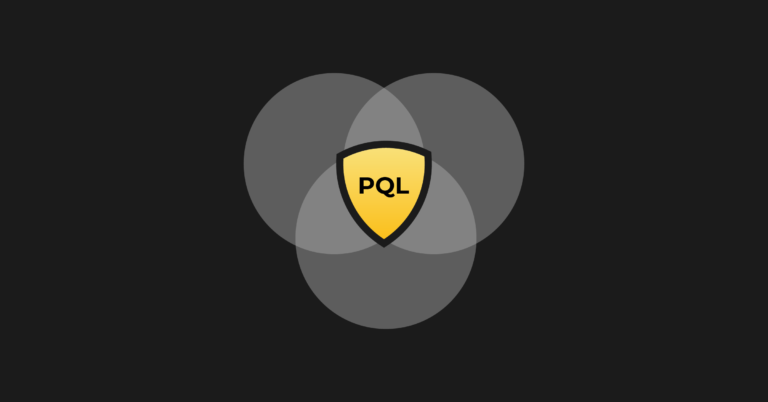Blue ocean companies access untapped market space and create demand, allowing for highly profitable growth. In contrast to red ocean companies competing to capture existing demand, blue ocean companies focus on creating demand for their products or services.
By understanding the concept of blue ocean companies and their relevance to product-led growth (PLG), your SaaS company can unlock new opportunities for highly profitable growth and differentiate itself in the market.
To discover the untapped potential of blue ocean companies, in this article, we will explore the concept of blue ocean strategy and its characteristics, provide examples of successful blue ocean companies, and offer tools and frameworks to implement the strategy.
Blue Ocean Strategy
The critical elements of a blue ocean strategy are innovation and differentiation.
Blue ocean companies focus on creating unique value propositions that set them apart from competitors. They drive down costs while simultaneously driving up value for buyers, achieving a leap in value for themselves and their customers.
One way to apply the blue ocean strategy to PLG is by leveraging the power of free trials and freemium models. Companies can create demand and attract a more extensive user base by offering potential customers a free taste of their product or service. This approach aligns with the concept of accessing untapped market space and creating demand, which is at the core of the blue ocean strategy.
Another important aspect of the blue ocean strategy is the ability to stay ahead of imitators.
While competitors may arise, experience shows a wide window of opportunity for blue ocean companies to maintain their competitive advantage. By continuously innovating and evolving their PLG strategies, companies can stay ahead of the curve and remain in the blue ocean.
A blue ocean strategy is about accessing untapped market space, creating demand, and differentiating oneself from competitors. Companies can achieve highly profitable growth in the product-led era by embracing innovation, leveraging free trials and freemium models, and staying ahead of imitators.
Red Oceans and Blue Oceans
In the business world, there are two distinct types of markets: blue oceans and red oceans.
Red ocean companies compete in crowded markets, fighting to capture existing demand and outperform their rivals. As the market space gets crowded, the prospects for profits and growth reduce, and products become commodities. It's a cut-throat competition that turns the ocean bloody red.
On the other hand, blue ocean companies access untapped market space and create demand. They have the opportunity for highly profitable growth because they are not competing directly with others. In blue oceans, competition is irrelevant. While imitators may arise, experience shows a wide window of opportunity to stay ahead of them.
Comparing Blue Ocean Strategy vs Red Ocean Strategy
The critical difference between these two types of businesses is their market approach.
Understanding the concept of blue and red oceans is crucial for businesses looking to grow and succeed. You can tailor your strategies and tactics by identifying whether you are in a red or blue ocean.
Red ocean companies focus on beating their competitors and capturing a larger share of the existing demand. They rely on traditional marketing tactics and often engage in price wars to attract customers.
In contrast, blue ocean companies take a different approach. They focus on creating new demand by offering innovative products or services that address unmet needs in the market. They don't compete head-on with others because they operate in a space where competition is irrelevant. Instead, they strive to differentiate themselves and create a unique value proposition that attracts customers.
Identifying Your Market Position: Red or Blue Ocean?
You need to assess the market conditions to determine whether your business operates in a red ocean or a blue ocean.
Are you competing in a crowded market where the competition is fierce, and the prospects for growth are limited? If so, you are likely in a red ocean.
On the other hand, if you are operating in an untapped market space with the opportunity to create demand and differentiate yourself, you are in a blue ocean.
To learn more about the blue ocean strategy and how it can help your business, check out the book "Product-Led Growth" by Wes Bush.
Successful Blue Ocean Examples of SaaS Companies
Applying a blue ocean strategy can be a game-changer for SaaS companies.
Salesforce
One successful blue ocean example in the SaaS industry is Salesforce, a leading customer relationship management (CRM) platform. Salesforce revolutionized the CRM market by offering a cloud-based solution accessible to businesses of all sizes.
By creating a demand for CRM software in the cloud, Salesforce was able to tap into an untapped market space and establish itself as a dominant player in the industry.
HubSpot
Another notable blue ocean example is HubSpot, an inbound marketing and sales software company. HubSpot disrupted the traditional marketing and sales industry by offering an all-in-one platform that integrated various marketing tools and analytics.
This approach allowed businesses to streamline marketing efforts and drive more effective results. By creating a new market space and addressing the pain points of marketers, HubSpot achieved rapid growth and established itself as a leader in the industry.
Slack
Slack, a team collaboration and communication platform, is another example of a thriving blue ocean SaaS company. Slack identified the need for a more efficient and organized way for teams to communicate and collaborate and created a solution that simplified workplace communication.
By offering a user-friendly interface and integrations with other popular tools, Slack captured a significant market share and became the go-to platform for team communication.
4 Blue Ocean Strategy Tools and Frameworks
Blue ocean strategy is a concept that focuses on creating untapped market space and generating demand, allowing companies to achieve highly profitable growth.
Unlike traditional strategies that compete in existing markets (red oceans), blue ocean companies access new market space where competition is irrelevant. This gives them a wide window of opportunity to stay ahead of imitators.
Companies can utilize various tools and frameworks to implement the blue ocean strategy.
1. Four Actions Framework
One such tool is the Four Actions Framework, which helps identify and eliminate unnecessary factors that drive costs and reduce customer value. Companies can create new demand and differentiate themselves from competitors by focusing on value innovation.
2. Six Paths Framework
Another powerful tool is the Six Paths Framework, which helps companies explore new market opportunities by looking beyond their industry boundaries. By considering alternative industries, strategic groups, buyer groups, complementary product and service offerings, functional-emotional appeal, and time, companies can uncover new avenues for growth and create uncontested market space.
3. Blue Ocean Strategy Canvas
Additionally, the Blue Ocean Strategy Canvas is a visual framework that helps companies identify the key factors that customers value and the factors that they are willing to sacrifice. By understanding these trade-offs, companies can design their products or services to deliver superior value and stand out in the market.
4. Product-Led Growth
Implementing a blue ocean strategy requires a shift in mindset from competing in existing markets to creating new markets. It involves a deep understanding of customer needs and preferences and a willingness to challenge industry norms and conventions.
By adopting a PLG approach, companies can leverage their products as the primary driver of growth and differentiation.
Steps to Implementing a Blue Ocean Strategy
Implementing a Blue Ocean Strategy involves several steps.
First, do a market space analysis.
You need to understand the current market and identify areas of opportunity to implement a successful blue market strategy.
Achieve this through:
- Market research
- Customer feedback
- Analysis of industry trends.
By understanding the needs and preferences of customers, companies can identify gaps in the market that they can fill with innovative products or services.
Next, develop a value proposition.
A value proposition sets the company apart from its competitors. It involves identifying the key factors influencing customer purchasing decisions and finding ways to create new value in those areas.
Companies should focus on offering unique and differentiated products or services that fulfill unmet customer needs as no other company does.
Finally, start planning your implementation process.
Once the value proposition is defined, companies need to develop an implementation plan.
Doing so involves:
- Setting clear goals and objectives
- Identifying the resources and capabilities required to execute the strategy
- Creating a timeline for implementation
Companies should also establish key SaaS metrics for measuring success and regularly review and adjust their strategy as needed.
The Importance of Value Innovation for Blue Ocean
Value innovation is a key concept in the blue ocean strategy.
It involves creating new value for customers while simultaneously reducing costs. By focusing on value innovation, companies can offer products or services that are both unique and affordable, making them highly attractive to customers.
Value innovation is essential for blue ocean companies because it allows them to differentiate themselves from their competitors and create a new market space. Blue ocean companies can attract new customers and capture market share by offering a unique value proposition that fulfills unmet customer needs as no other company does.
Value innovation also enables blue ocean companies to achieve higher profitability. By reducing costs through innovation and operational efficiency, companies can offer their products or services at a lower price point while maintaining a healthy profit margin. This creates a win-win situation where customers get more value for their money, and companies generate higher profits.
Tips on Applying Blue Ocean Strategy
1. Focus on understanding the needs and preferences of customers.
Conduct comprehensive market research, gather customer feedback, and analyze industry trends to identify unmet needs and areas of opportunity. A customer-centric approach is fundamental to uncovering the blue ocean of opportunity.
2. Think outside the box and challenge industry norms.
Blue ocean companies often disrupt traditional industries by offering innovative solutions that challenge the status quo. By thinking differently and being willing to take risks, companies can create their own market space and differentiate themselves from their competitors.
3. Foster collaboration within all departments.
Companies should involve employees from different departments and levels of the organization in the strategy development process. By fostering a culture of collaboration and encouraging diverse perspectives, companies can generate innovative ideas and ensure buy-in and support for the strategy.
Recap on Blue Ocean Companies
Blue ocean strategy is defined by its focus on value innovation and creating uncontested market space. Successful examples of blue ocean companies include Salesforce, Hubspot, and Slack.
Companies can identify and implement blue ocean strategies using tools and frameworks such as the Strategy Canvas and the Four Actions Framework. Implementing a blue ocean strategy involves exploring new market spaces, creating a value curve, and executing a strategic plan.
Value innovation is crucial for blue ocean companies as it involves simultaneously pursuing differentiation and low cost. When applying the blue ocean strategy, it is important to focus on customer needs, challenge industry assumptions, and differentiate from the competition.
Continue to expand your SaaS growth knowledge with the insights from Wes Bush’s bestselling book, “Product-Led Growth: How to Build a Product That Sells Itself.”
Alternatively, if you’d like to work with a coach to implement these components into your business, check out ProductLed Academy.
It’s our intensive coaching program where we’ll help you build a strong foundation for product-led growth so that you can scale faster and with more control.
What’s unique about this program is we’ll work with you and your team to implement the proven ProductLed Method so that you can scale faster with less stress.
We’ll go through everything we went through today with your team to ensure everyone is working on building out solutions that will have an outsized impact.









